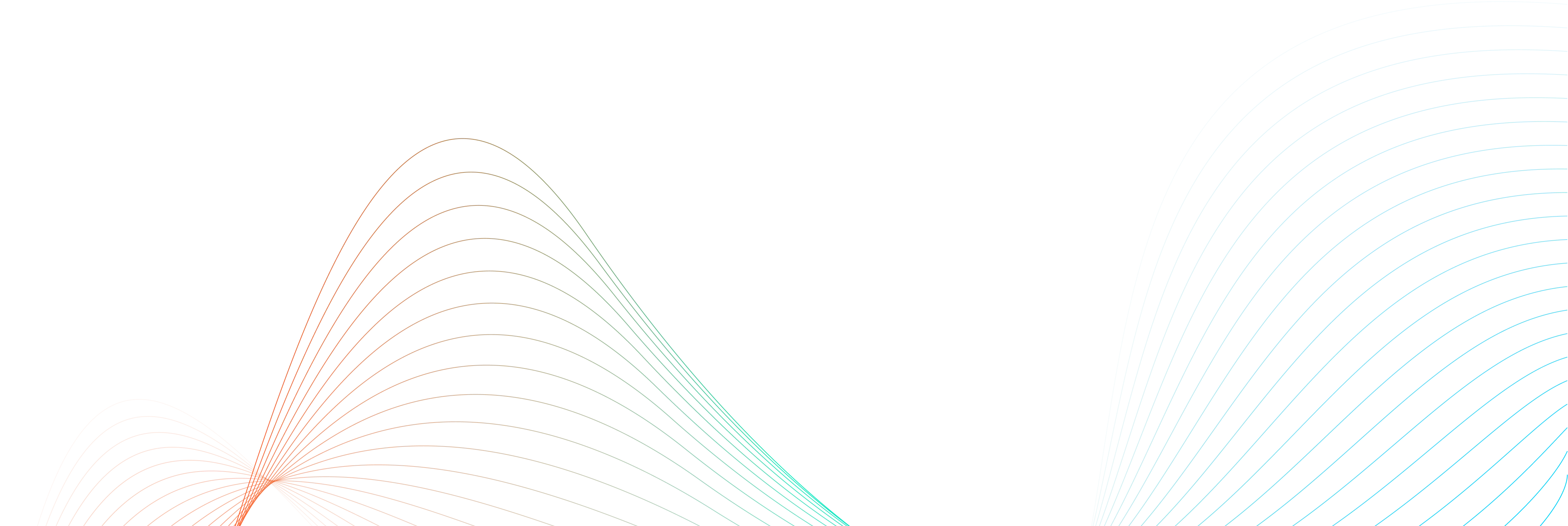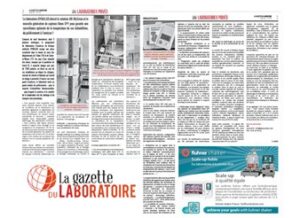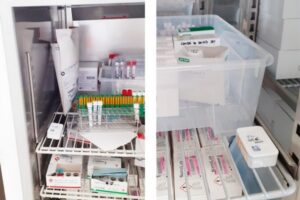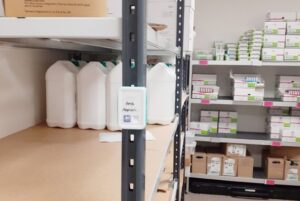
DYNALAB chooses the JRI-MySirius solution

JRI-MySirius and the new generation of Nano SPY sensors have been chosen by the DYNALAB laboratory to guarantee optimum monitoring of sample temperature, from sampling to analysis!
Comprising nine laboratories, including 3 technical platforms, the DYNALAB group of medical biology laboratories plays an essential role in the healthcare chain in the Aube (10) and Seine-et-Marne (77) départements. With the Covid-19 pandemic at the forefront of its mind, the group welcomes nearly 1,500 patients every day, either directly to its facilities, or from nearby clinics, retirement homes and hospitals.
Through its vast range of analyses, the laboratory processes a large number of samples – the majority of which are heat-sensitive – for which temperature control and monitoring during storage and transport are of paramount importance.
“To guarantee this traceability, we wanted a temperature monitoring solution that would also enable us to deploy new connected sensors at our peripheral sites, simply, automatically and securely”, explains Isabelle HILD, Quality-Metrology Manager at DYNALAB Laboratories.
“We had already been using JRI’s Sirius Stockage software and SPY RF temperature recorders for several years. We therefore chose to equip ourselves with the new generation of Nano SPY wireless temperature sensors, and to migrate our measurement monitoring system to the new JRI-MySirius platform”.
What advantages do these new solutions offer in the face of the technical and regulatory requirements and constraints imposed on laboratories? How do DYNALAB’s teams use Nano SPY sensors and the JRI-MySirius monitoring platform on a daily basis? Here’s how…
DYNALAB: 9 medical laboratories and 1 technical platform, ISO 15189 accredited
DYNALAB’s nine medical biology laboratories and technical platform are spread across the city of Troyes and its surrounding area, as well as the Paris region. Their services range from clinical biology and biochemistry, to hematology, immunology and microbiology, to molecular biology and reproductive biology.
A member of the LBI (Laboratoires des Biologistes Indépendants) network, DYNALAB employs almost 130 people, all of whom are closely involved in the day-to-day implementation and application of an ISO 15189-accredited quality management system, focused on listening to and satisfying customers.
Samples taken by our sampling staff (biologists, assistants, technicians) are sent to our technical platforms for analysis. This multi-site organization guarantees optimum analysis quality, in particular through perfect control of sample storage and transport conditions!
Temperature monitoring begins with the storage phase at each peripheral site, where samples are kept in thermo-controlled equipment, and continues during transport in thermostatically-controlled containers to the technical platform, where it ends with a short conservation phase prior to analysis.
Nano SPY T1, Nano SPY T2 high-speed digital mini temperature recorders for incubators and Nano SPY T1 for ambient conditions

“All our enclosures are now equipped with Nano SPY mini-temperature loggers,” explains Ms HILD. “As the vast majority of our peripheral sites are equipped with the same type of temperature-controlled equipment, the measurement points are identical.”
Nano SPY T1 sensors – installed directly in the refrigerators – enable temperature to be monitored as close as possible to heat-sensitive products, while the special Nano SPY T2 Incubator model – equipped with an external probe, attached to the enclosure using an integrated magnet – is used to monitor the ovens. “The calibration of the Nano SPY T2 sensor, restricted to a specific temperature range of this critical equipment, ensures excellent measurement accuracy”, emphasizes Mrs. HILD.
Finally, ambient conditions in storage and technical areas are monitored by a dedicated Nano SPY T1 data logger.
Each sensor is ready to use and has a long battery life; its configuration is quickly determined by colored rings, and its status identified by operating and alarm lights.
The data collected by each sensor is then sent automatically by 2.4 GHz radio frequency to the Nano SPY Link transmission module, which then uploads it to the secure JRI Cloud, to be hosted and processed by the JRI-MySirius web application.

LoRa SPY long-range sensors for sample transport
“Samples are transported from peripheral sites to the technical platform,” adds Isabelle HILD.
“Twice a year (summer and winter), we validate the transport containers using LoRa SPY long-range sensors. On arrival at the technical platform, the measurements they have recorded are also automatically transmitted to the Nano SPY Link.
The Nano SPY Link module for data transfer to the JRI-MySirius platform
Thanks to a simple Internet connection, the Nano SPY Link module transmits temperature measurements securely to the JRI-MySirius platform.
The data can then be processed and accessed by all teams, 24 hours a day. In the event of a temperature incident, alerts are immediately sent via the platform to enable corrective action to be taken.
The JRI-MySirius Advanced level application is CFR Part 11 compliant, and includes 36 months of measurement consultation, data archiving, full activity log, metrological sensor management and many other features designed to meet the Quality needs of pharmacists and pharmaceutical wholesalers.
All data is hosted on Microsoft’s ultra-secure “Azure” servers to meet security requirements. Technical support is available on request.
Measurement supervision, sensor configuration, alarm management, metrological data monitoring… the advantages of the JRI-MySirius application
“JRI-MySirius is a software application whose user-friendliness is a real asset. When you log on, alarmed enclosures and faulty sensors are automatically displayed on the dashboard, making it easy to identify and locate them within the laboratory(ies)”, emphasizes Isabelle HILD.
“One of the advantages of JRI-MySirius is that all the laboratories are displayed in plan mode, which makes it easy to remember where the sensors are located.
“The MySirius software also offers the possibility of producing reports to evaluate, according to defined periods, statistics on overruns and alarm handling times”, adds the Metrology Quality Manager at the DYNALAB laboratory. And, of course, to consult and manage the metrological aspects of the sensors: calibration, verification, mapping…
Ms HILD continues: “I would also highlight – among other advantages of the JRI-MySirius solution:
the possibility of cascading alarms: this prioritizes “crescendo” means of alert, from the visual alarm, then the audible one [Nano Link’s luminous banner or its buzzer, luminous LED on the sensors…], to the SMS or e-mail. These alarms are not simultaneous, but are triggered according to a defined period for each type of enclosure.
programming of alert thresholds and critical alert thresholds, according to the contents of the enclosures and/or premises, when a risk of impact on products is identified;
easy-to-use, user-friendly interface. New employees, even novices, can be integrated very easily.
automatic detection of sensors, when they are added or replaced, as soon as they are activated and in the vicinity of the Link ;
rapid integration of certificates of conformity, with a copy of the files directly integrated via the serial number of the declared sensor…”.
Simplicity of implementation and use, compliance, savings, time savings…: JRI goes further!
JRI supports the JRI-MySirius solution with a wide range of services: from installation and qualification of the system, to team training, laboratory and on-site metrology, right through to maintenance operations… The DYNALAB laboratory has also signed a maintenance contract with JRI, including hotline assistance, enabling it to contact technical support at any time.
“The mandatory annual Cofrac calibration of the Nano SPY temperature sensors is carried out by rotation with new probes that have already been Cofrac-calibrated, without having to interrupt the monitoring of our equipment”, stresses Mrs HILD. Once a year, a JRI technician visits each site to carry out the work and collect the old sensors. These are checked by JRI metrologists for drift analysis, in accordance with the regulatory requirement of NF EN 15-189, before being recycled by JRI.
The maintenance contracts offered by JRI include all the services required to keep your installation in operational condition: access to the hotline, extended hardware and software warranties, on-site preventive and corrective maintenance, pre-planned support and technical administration days, etc.
Article written by Solenne Denis and published in La Gazette du Laboratoire N° 276 dated June 2021.


